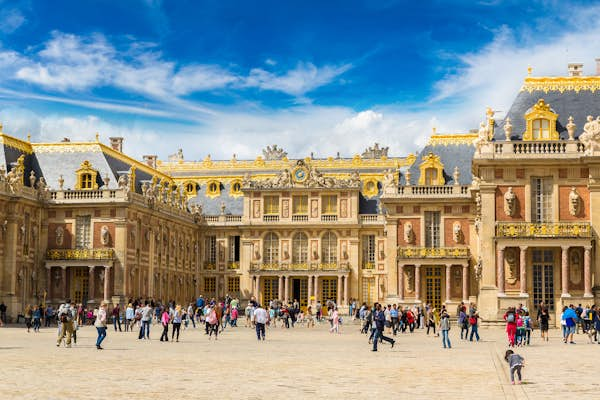Marie Antoinette’s rooms at Versailles will reopen in June. Here's what you can see inside
After a painstaking renovation, Marie Antoinette’s private chambers at the Château de Versailles reopen to the public on June 20.

At Versailles, everything glitters – and it’s probably gold.
Built by Louis XIV on the site of his father Louis XIII’s hunting lodge in the 17th century, the Château de Versailles is surely the best example of the astonishing wealth of the French royal family.
Discover the world’s most intriguing experiences with our weekly newsletter delivered straight to your inbox.
Welcoming almost 10 million visitors each year, Versailles today is one of the most visited monuments in the world. Among its last residents was Austrian archduchess and French queen Marie Antoinette – wife of Louis XVI, the Sun King’s great-great-great-grandson – whose image has conquered the hearts, imaginations and cinema screens of generations.
Often painted wearing elaborate wigs and dresses of rich blue silk, Marie Antoinette, who lived at Versailles between 1770 and 1788, was known in her day as well as ours for a style that was the opposite of understated. And although her infamous comment regarding bread-starved peasants (“let them eat cake”) is probably apocryphal, she wasn’t shy about enjoying life’s luxuries.
Now, following a painstaking seven-year restoration project, her private chambers at Versailles will reopen to the public on June 20. Among the newly accessible rooms are the Meridian Room (cabinet de la Méridienne), the Library and the Gold Room, as well as a series of richly decorated chambers on the upper floor.
The 18th-century furniture and furnishings in Marie Antoinette’s private chambers have been carefully restored © courtesy Château de VersaillesWhat’s inside Marie-Antoinette's chambers?
The two floors to reopen were once exclusively reserved for the queen. She would retreat there following public duties, only inviting a select few family members, friends and their children to join her.
“[Marie Antoinette] always had to be up to date with the latest fashions,” says Hélène Delalex, heritage curator for Versailles and the Trianon. “She had a very self-assured taste. Being exacting and impatient, she completely redecorated her chambers roughly every three years.”
The first floor contains a vast library of gilded bookcases, hidden doors and shelving units held together by an intricate system of cogs and pulleys. In the Meridian Room – redecorated in celebration of Marie Antoinette and Louis XVI’s second child (but first son and thus heir) Louis Joseph, born in 1781 – an ottoman sits in the alcove underneath a ceiling of stained glass. On the second floor is a billiards room, dining room, boudoir, three bedrooms reserved for her most important ladies’ maids and three rooms for servants.
Workers place a bust of France's last queen Marie-Antoinette on a mantelpiece in her former bed chamber at the Palace of Versailles © François Guillot / AFP via Getty ImagesA restoration project worthy of an episode of Queer Eye
A true bonne vivante, Marie Antoinette was known for her enjoyment of the arts. She loved theater, comedy, music, dance, masked balls and playing card games until the small hours. Only 14 years old when she married Louis XVI, she inherited this suite of rooms when she succeeded Marie Leszczyńska, wife of Louis XV, as queen in 1774.
Young Marie Antoinette was eager to put her own stamp on the rooms, not least due to an ardent dislike of her predecessor. She began an extensive redecoration project worthy of an episode of Queer Eye, which would continue until she left Versailles for Paris in 1789 at the start of the Revolution. (She and her husband would be executed in 1793.)
Constantly tinkering, she kept up with every trend – likely setting many of them – including the penchant for all things ancient Egyptian that swept through France toward the end of the 18th century.
“For a long time, the second floor of Marie Antoinette’s chambers was little known, and little documented,” says Delalex. “This has been a huge research project, undertaken using building plans and archives from the time. It has helped us to understand what each room was used for, and how they were decorated.”
Featuring new acquisitions, paintings and artifacts relating to the time, the boudoir of one of the most famous French women in history is back – and as gilded as ever.


















